Last November, my husband and I were getting into a bit of the Beijing blues, so we brainstormed as to where we could go for a little break. We were looking for somewhere close, inexpensive, outside of China, and enticing enough to warrant a trip. And that was when we realized we had never been to Seoul.

Seoul — and especially Seoul in winter — is not a very obvious vacation destination over here (Thailand is far more popular among the expats in Beijing, it seems). Even when we came back raving about the city, we frequently encountered the response: “Really? Why?” We’ve even asked ourselves that question over and over — but more in the sense of, “Why can’t all trips be this great?” :)
So let me try to break it down here…
First: For starters, Beijing is not really close to any major cities. If you’re visiting Beijing and trying to figure out where else you can go nearby, it’s not an easy task (I’ve tried myself a number of times). But then, there’s Seoul. An hour and a half by plane, and you’re in another country. It’s even closer than Shanghai. When you have small children, the short flight definitely makes a difference. Plus, being in the same region as Beijing means that it doesn’t take many air mileage points to get there. (Actual ticket prices, though, are about the same as going to other parts of Asia.)
Second: It is civilized! By which I mean it’s clean and orderly, people are polite, the food and water aren’t going to kill you, and the internet’s not censored. It’s all relative, of course. Before our trip, some of my Korean American friends warned me about the suspect street food and the lack of diaper-changing tables anywhere… But arriving from Beijing, I was all too delighted to be greeted by this pristine-looking airport. And the trip just got better from there… I would put Seoul up there with Singapore and Hong Kong (I haven’t been to Tokyo) in terms of being an orderly, modern Asian city.

Third: It’s incredibly easy to get around. One of the main things that made this trip great was how independent we felt. The subway goes everywhere (and is clean and not mobbed by people — again, all relative, coming from Beijing). It made me realize how important transportation is in allowing you the freedom to truly wander and explore. Not a lot of English is spoken, but a surprising number of people knew Mandarin (both Chinese workers and local Koreans). And everyone we encountered was super friendly — on a couple occasions strangers on the street would stop for something like 15 minutes just trying to help us find things. One person even started making phone calls to ask around for us.
Fourth and most important of all: You don’t have to put forth much effort to eat well in this city. Not only is everything delicious, but I think the people here are almost obsessed with the quality of all of their goods — from food to beauty products to clothing. Visit a market, and you’ll find gourmet red pepper powder, gourmet seaweed, gourmet dried anchovies, gourmet Spam gift sets… And here is where we get to possibly the only downside to Seoul — stuff is expensive. But on the other hand, I don’t think we ate anything in Seoul that was not fresh and beautiful. I’m almost inclined to think that cheap, bad quality stuff just doesn’t exist here. And I didn’t miss it.
For this trip, we really wanted to try foods that we’d never had before, so that’s what we focused on. Even though I had a lot of good Korean food at my disposal when we lived in the DC area, I didn’t really venture much beyond barbeque, and my few favorites, soondubu (spicy soft tofu stew) and japchae (sweet potato noodles). Before our trip, I contacted a few of my Korean American friends for some tips, and they did not steer me wrong. One of them introduced me to the Kimchi Chronicles TV series, which I devoured (thanks, Judy!). So, here I give you what we ate in Seoul.
Street Food at Gwangjang Market
Our first meal in Seoul was at the incredible Gwangjang Market. We also visited Namdaemun and Dongdaemun markets, but this one is definitely the most impressive in terms of food. We spent a good amount of time just wandering through the alleys filled with street food vendors, market stalls, and small shops. There are often whole sections of the market devoted to just one food item, like gimbab alley or jeon alley. Here is a fun and helpful guide to the market, with a map as well as introduction to each of the most popular food items there.

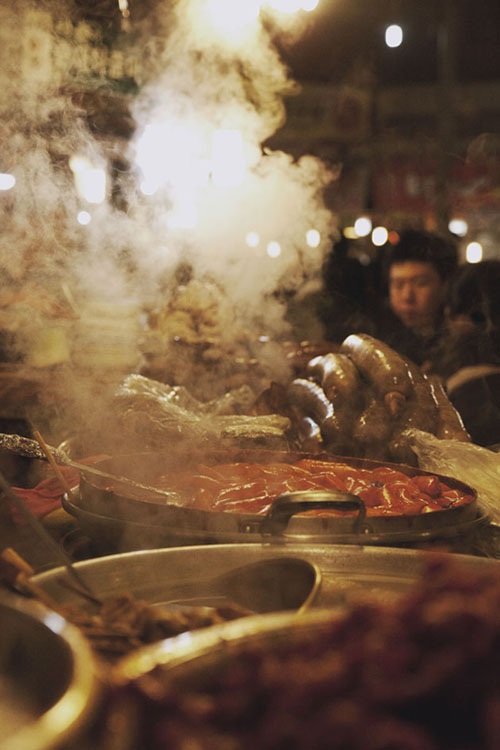

 clockwise: blood sausages, scallion pancakes, various types of jeon (Korean pancakes), cured crab and roe.
clockwise: blood sausages, scallion pancakes, various types of jeon (Korean pancakes), cured crab and roe.I definitely knew I wanted to try bindaetteok, the mung bean pancake. At Gwangjang, the mung beans are freshly ground and mixed into a batter. This was not as mung beany as I expected / hoped, but still good.


We also had tteokbokki, spicy rice cakes, which were plump and chewy.

What I knew I really wanted to try yukhoe, or Korean steak tartare. At Gwangjang Market, there’s actually a yukhoe alley filled with little eateries specializing in this dish. It might sound a little scary eating raw meat at a market, but these were actually small restaurants tucked in a narrow alley within the market. I thought they seemed quite clean, and they were certainly very popular (though use your own good judgment, of course).
The yukhoe actually turned out to be one of my favorite dishes. The tender steak is cut into thin strips and set over julienned Asian pear, then topped with soy sauce, sesame oil, sesame seeds, and a raw egg yolk. The Asian pear added a touch of sweetness and a slight crunch. I loved it.

Yukhoe is also often served alongside raw liver and raw tripe. I like liver, so I thought this raw liver was actually not bad — a bit more chewy but without the dryness of cooked liver. We dipped it in the sesame oil and salt on the side. The raw tripe was mostly chewy and didn’t taste much different from cooked tripe.

Gwangjang Market [map]
Metro: line 1, Jongno 5-ga station, exit 8
(To get to Yukhoe Alley, get out at exit 10 and go down the narrow alley between the two pharmacies. You can find a more detailed map at the bottom of this post.)
Hoe at Noryangjin Fish Market
The next morning we got up and went out to Noryangjin Fish Market for some sashimi. This was a really fun visit, and I will share more details and photos in a separate post coming up. [Update: You can find the post and details here.]
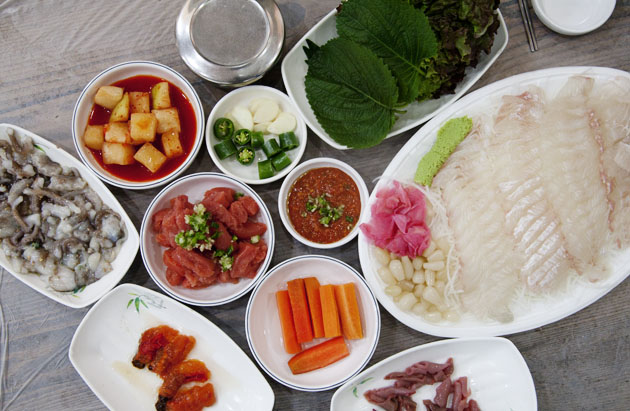
Budaejjigae (Army Base Stew)
Remember this dish? Spicy kimchi stew with Spam and Korean ramen? (You can read more about my investigation into its history here.) We actually tried it at two different places for comparison. The first was at Gwanghwamun Budaejjigae in Seoul proper. This was our first encounter with budaejjigae, and we were so content we were practically melting into the floor. This is homey comfort food at its finest. And a perfect cold November day in Seoul is sitting on the floor in front of this bubbling pot of delights, pulling strands of ramen into your bowl, and nibbling on slices of Spam that have soaked up all the flavors of the broth.
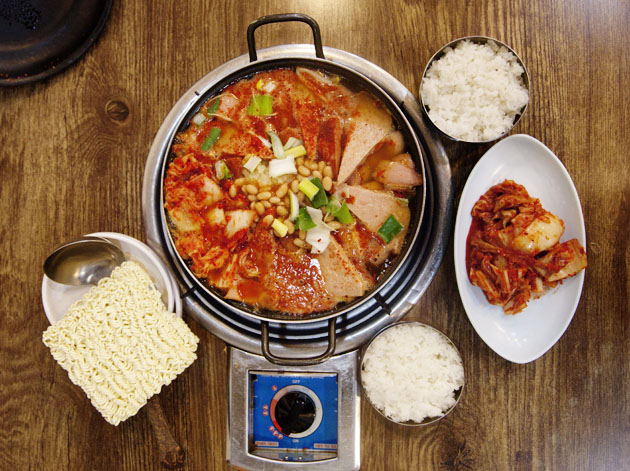
As satisfying as that first taste of budaejjigae was, I’m glad that came first, because our second experience really made this dish more than a guilty pleasure for me and turned it into a culinary creation well worth the devotion it gets in Korea. For this, we trekked out to Uijeongbu, a town just on the outskirts of Seoul, to visit Odeng Shikdang, the restaurant owned by the creator of this dish. I have to say that Odeng Shikdang’s version was outstanding. The broth just has a deep richness that makes it stand out above the rest. If you’re a serious eater, it’s worth the trek out to Uijeongbu, but if that’s too out of the way, Gwanghwamun’s was also excellent, and there are places throughout Seoul that serve different versions of the dish, some with baked beans, some with a slice of American cheese, some with bacon.


Gwanghwamun Budaejjigae [map]
Phone: 02-195-4030
Metro: Gwanghwamun station, exit 1 (then walk north)
This is in a small underground shopping complex. The entrance is at the corner across from the central government complex annex. Once underground, the restaurant is located across from a dentist’s office and Hold Me Coffee. The restaurant name is in Korean only, but you can look for the words for “budaejjigae” (부대찌개).
Odeng Shikdang [map]
220-58 Uijeongbu-dong, Uijeongbu city, South Korea
Phone: 31-842-0423
Metro: From Seoul, take the line 1 subway to Hoeryong and transfer to the Uijeongbu LRT (the LRT line may not be on Seoul metro maps). On the LRT, get off at Uijeongbu Jungang and go out exit 2, which takes you right to Budaejjigae Street (it’s right under the bridge you come out on). Alternatively, you can take the line 1 subway from Seoul straight to the Uijeongbu stop, but then you’ll have to walk a bit north to get to Budaejjigae Street.
Fried Chicken
I would love to return to Seoul and just do an all fried chicken trip. We still managed to do pretty well on this trip, and that’s all because of Hanchu. This place serves some of the crispiest and most flavorful fried chicken I’ve had. There are also bits of green chili pepper folded into the batter that makes it unique (without being that spicy). Hanchu also serves the green peppers stuffed with a ground pork filling and fried in a light batter. I couldn’t decide if I liked the peppers or the chicken more!
We had a little bit of trouble finding this place and ended up walking around in the rain for a bit. So when we sat down for our first bite, my husband asked, “This is good, but is it worth-walking-around-in-the-rain-for-half-an-hour kind of good?” I answered with a hesitant “yeee…s” at the time. But almost right after all that fried chicken was gone, we decided for the remainder of the trip that it was most definitely a worth-walking-around-in-the-rain-for-half-an-hour kind of good. Seoul Food calls it “The best fried chicken in Seoul. Hands down.” If only I had some now…

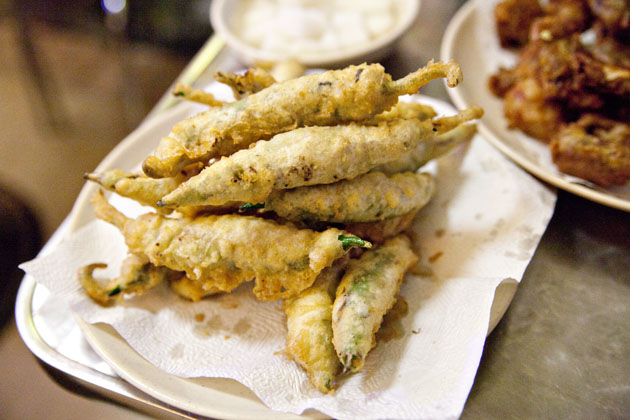
HanChu (한추) [map]
549-9 Sinsa-dong, Gangnam-gu, Seoul
Metro: between Sinsa station and Apgujung station on line 3
The second place specialized in garlic chicken or maneul chicken. This was at Maneul Chicken Alley out by the Daelim station, where there are a number of chicken restaurants in a row. I do like garlic, but I have to confess I didn’t really get into this dish. The garlic sauce made the chicken more soggy than crispy, and it was a bit overpowering for me. But this does seem to be a popular Korean dish, so you may want to try and see for yourself. There are several other fried chicken places right next door, so if this one doesn’t do it for you, you can try one of the others.

Wonjo Daelim Maneul Tongdak (ì›ì¡°ëŒ€ë¦¼ë§ˆëŠ˜í†µë‹) [map]
73-10 Jinseong Bldg. Guro 4(sa)-dong, Guro-gu
Phone: 02-862-9233
Metro: Daelim station, line 2, exit 4
(See this post for a map and guide to the four fried chicken restaurants on this street.)
Korean BBQ
We had Korean BBQ twice in Seoul. The first time was with some friends, and unfortunately I neglected to get the name or details of the place they brought us to. The highlight of this place, though, was the incredible spread of veggies they give you to wrap your meat with. (Sorry, I didn’t get a good picture, but notice the long trays of leafy greens on both sides of the table!) The Vietnamese wrap lover in me could not have been happier. There were fresh leafy greens of all sorts, many of which I didn’t even recognize, as well as paper-thin slices of radishes large enough to also use as wraps. And it was all crisp, vibrant, and gorgeous — just like practically all the food we ate in Seoul. Also on the tray were steamed veggies for wrapping, which not many places serve. Among those I recognized were sheets of thick green seaweed, lotus leaves, and napa cabbage leaves. We ate this with grilled meats — if I’m not mistaken, I think we had chadolbaegi (thinly sliced brisket)Â and samgyeopsal (pork belly). Periodically, a waitress would come and clean the grill down with a plastic spray bottle that she told us contained soju. :)
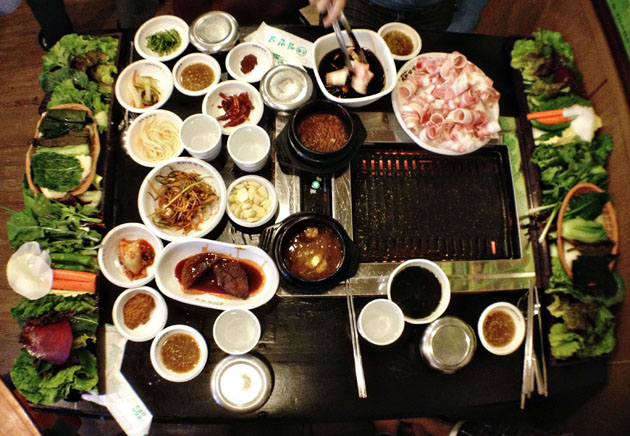
Our other BBQ was at Ouga, which is actually known for its bamboo rice. The rice is steamed inside the bamboo stalk, which lends a subtle fragrance to the grains.
As usual, the various lettuce leaves they give you to wrap the meats with were pristine.

This was had with grilled pork and galbi (beef short rib) cut in the traditional Korean way, where the meat is sliced into a long thin layer coming off the bone (this is known as Wang Galbi, as opposed to LA Galbi where the meat is cut across the bone). Koreans take a lot of pride in their meat, and especially their beef. We didn’t have any of the prized traditional Korean beef this trip, but if you are a true meat lover you may not want to miss that (see recommendations here).
Since we had not yet tried nnangmyeon, we also ordered some here. It’s actually a Northern Korean dish of cold noodles served in a slightly tart broth with egg and sliced cucumbers. The noodles are made from various starches, sometimes including buckwheat, arrowroot, sweet potatoes, and kudzu, and they are both delicate and satisfyingly chewy. Along with the cool broth, it’s a very refreshing dish.

Ouga [
map]
12-13 Chungmuro 2-ga, Jung-gu,
Phone: 02-753-7533
Metro:Â Myeong-dong station, line 1, exit 9
Ganjang Gejang (soy-cured crab)
One of the things I most looked forward to trying in Seoul was ganjang gejang. This is raw crab that has been cured in soy sauce. It’s sold at the markets, so we thought we’d just buy one to try. That turned out fine but rather salty, and it’s really something that should be eaten as a meal with rice and accompaniments. So on our last night in Seoul, we went to Keun Giwa Jip, where we had a much better version that was more subtle. The crab was both sweet and salty, and after being cured it had this soft, fleshy texture (similar to raw shrimp). At the end, you mix rice into the shell to sop up all the rich, gooey roe and tomalley.

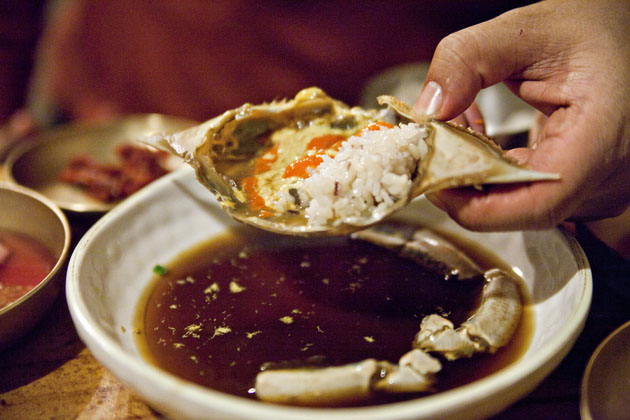
This is one of the more expensive dishes in Seoul, but it must be tried. You also have to keep in mind that oftentimes when you order a main dish in Korea, you’re really ordering a whole meal. So while it will look like you’re paying something like $35 for one little crab, you actually end up with a whole table full of ban chan (small pickled dishes) and bubbling stews. We went to Keun Giwa Jip just because it was right by where we were staying, but another very popular place is the ganjang gejang alley in Sinsa-dong.
At Keun Giwa Jip, we also got an order of galbi jjim, or braised short ribs, which is marinated in soy sauce, garlic, sugar, and other ingredients, and is then slowly cooked to a sweet-savory, melt-in-your-mouth doneness.

Keun Giwa Jip (í° ê¸°ì™€ì§‘) [
map]
122-3 Sogyeok-dong (62 Bukchon-ro 5-gil), Jongno-gu
Phone: 02-722-9024
Metro: Anguk station, line 3, exit 1
Manjoo Hana
I have to throw this in here because it just gave my husband and me so much joy on our trip. At many of the subway stations, including ours, there’s a Manjoo Hana stand making fresh waffle cakes with a creamy pudding-like center. The sweet, eggy aroma fills the subway tunnels from many meters away. It’s like some happy drug they pump into the air to make everyone smile through the cold Korean winter. Just thinking about it right now puts me in a blissful trance. We got a bag of these every day. :)
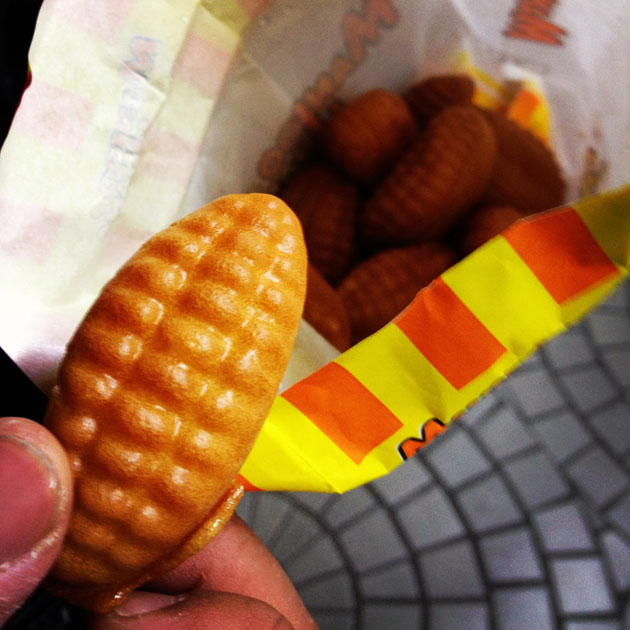
Although we had less than 5 days in Seoul, we consider it one of our favorite trips of all time and are looking for every excuse to go back. We really did nothing but eat here, and then in the evenings, we’d head back early to the guesthouse, put our little guy to bed, and curl up in the dark and watch movies on our laptop. Every vacation should be so good. :)
Resources:
Seoul Food Tour with Hachi – This site is the answer to all your Seoul street food needs. There are 20 installments, each devoted to a particular Korean food, where to find it, and detailed instructions (including the cutest hand-drawn maps!) on how to get there.
Kimchi Chronicles: This television series is a fast-paced travelogue and cooking show featuring an eclectic mix of characters: the main host is Marja, wife of chef Jean-Georges, and now and then Hugh Jackman makes an appearance too. Available on Hulu.
A la mode journals – The blog of food and travel photographer Rick Poon.
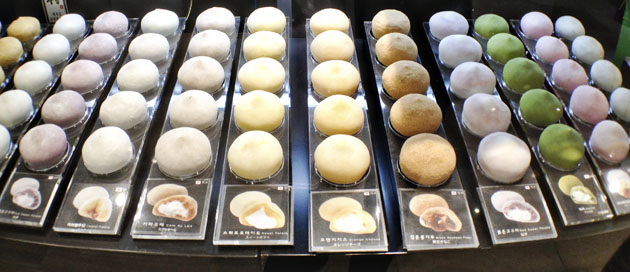
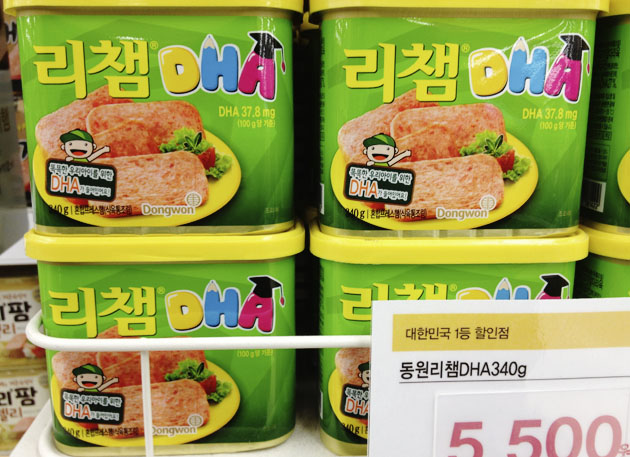 Koreans love Spam, and Emart was filled with all types of it, including this kids’ version advertising DHA!
Koreans love Spam, and Emart was filled with all types of it, including this kids’ version advertising DHA!









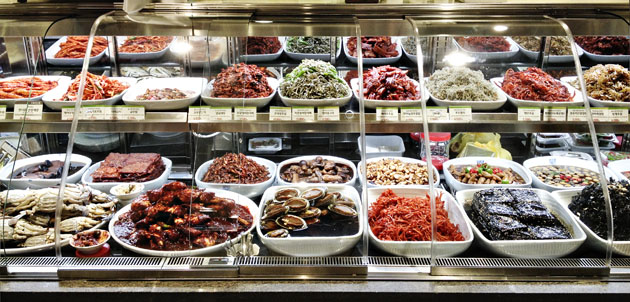

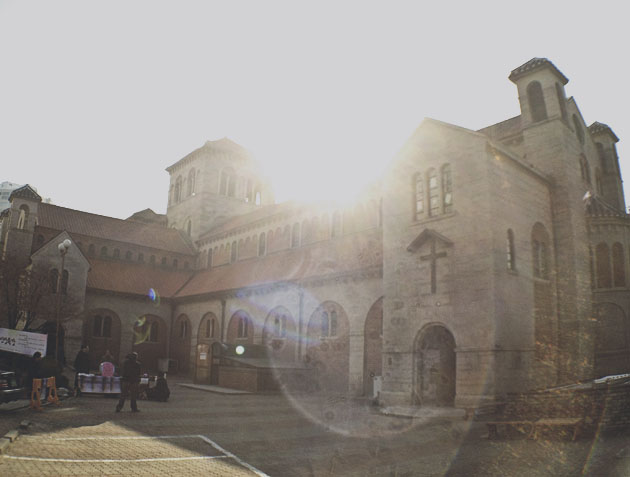


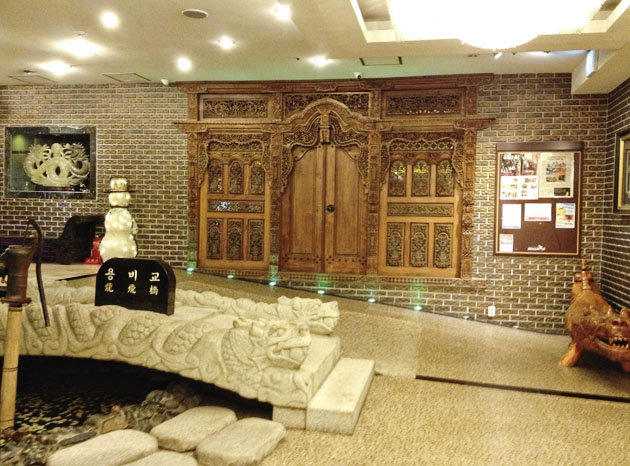
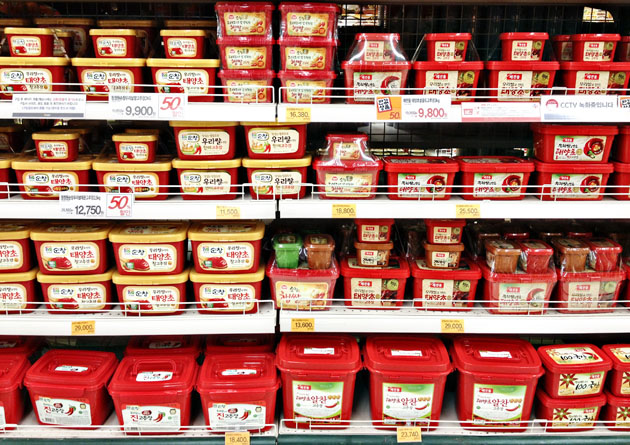
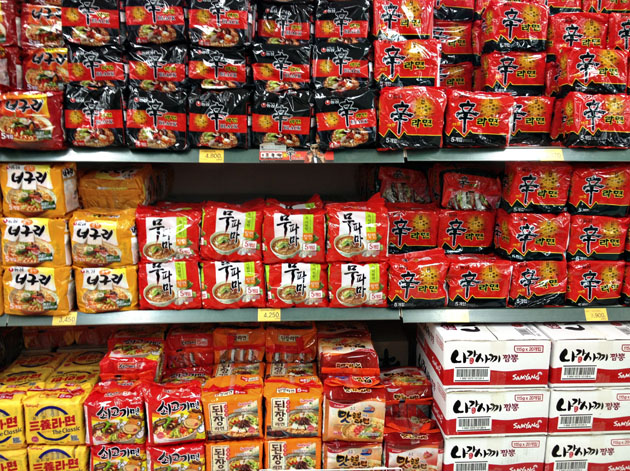
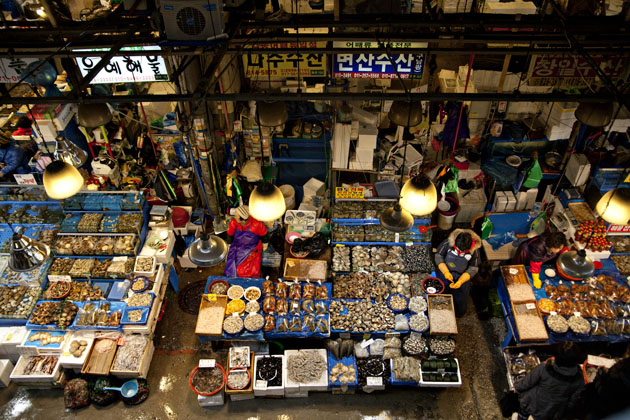



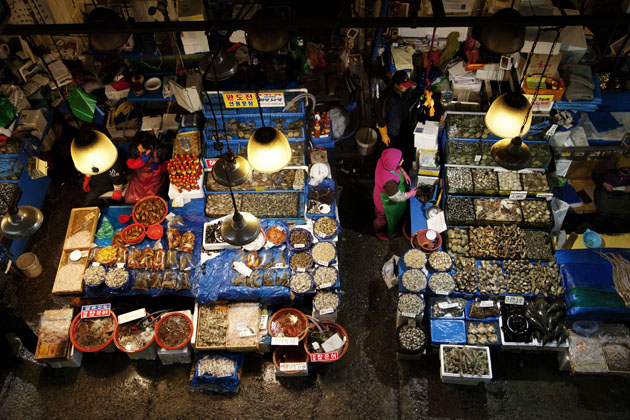



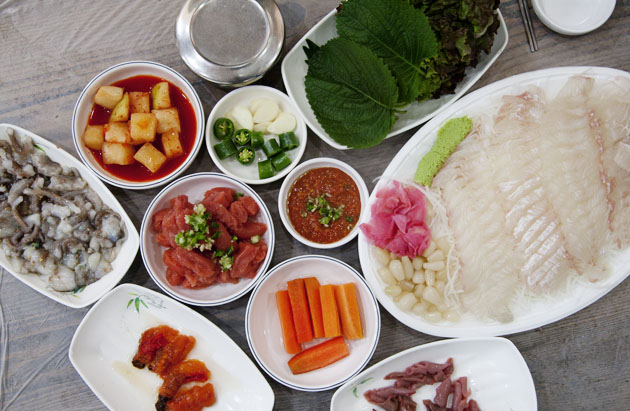
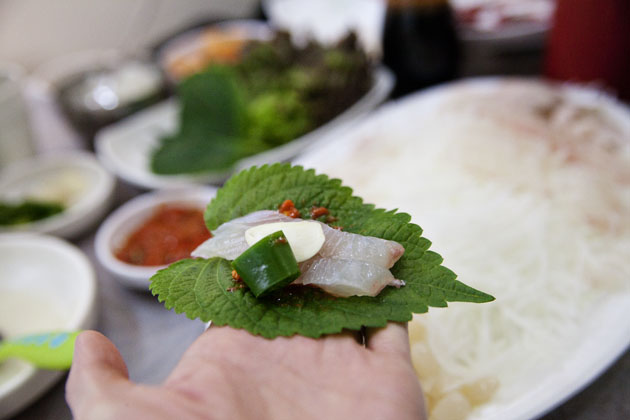
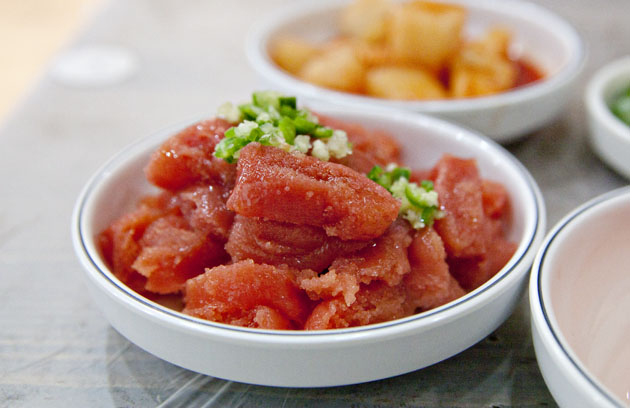




















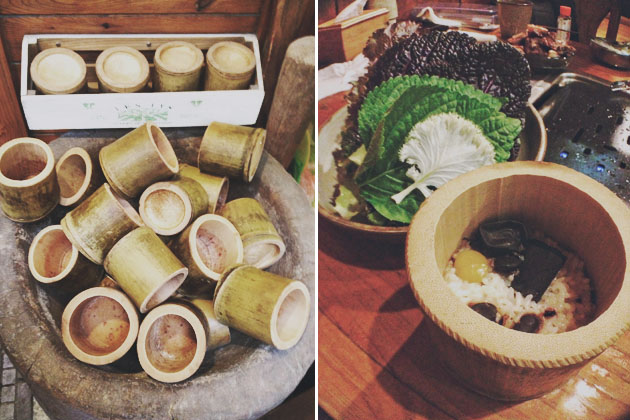






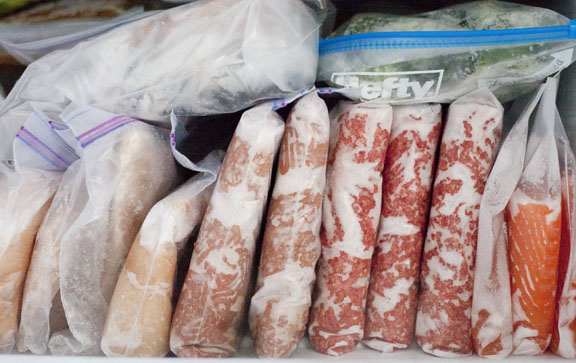









Connect with us